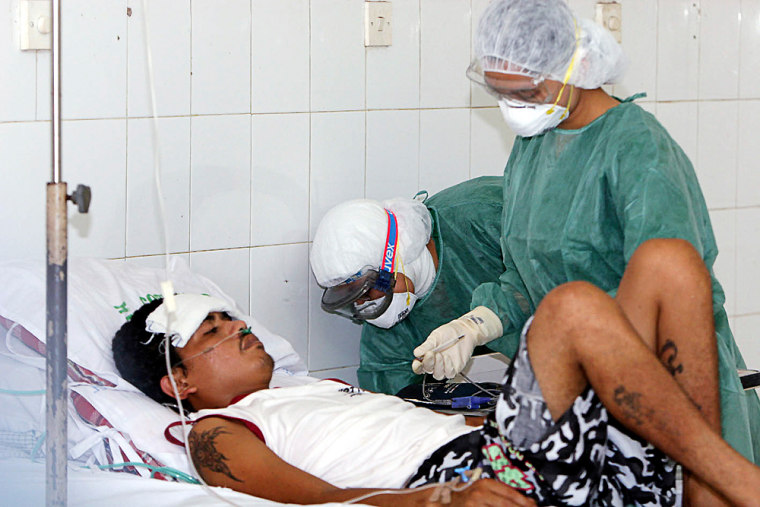KUBU SEMBILANG, Indonesia - Driving into this hardscrabble mountain village past thick orange groves and tall corn close to harvest, Kubu Sembilang does not appear to be the place where a worldwide pandemic of bird flu will begin.
But that is a still a very real fear because despite the best efforts by field epidemiologists from the World Health Organization, the Centers for Disease Control and Prevention, and the Indonesian government, the source of avian flu in this hamlet has not been discovered.
Befuddling cluster
The cluster began with one extended family living side-by-side in three homes and so far has killed seven of the eight members who came down with the virus.
In fact, it is the largest cluster ever of H5N1 bird flu virus cases. It is so large and so virulent that health officials have been extremely worried.
Clusters are looked on with far more suspicion than isolated infections because they raise the possibility the virus might have mutated to transmit efficiently among humans, potentially sparking a pandemic and killing millions of people.
Yet, after two weeks of extensive field work and laboratory testing, the WHO has not been able to determine the source of the virus. Given the rural area where the cluster occurred, where farming and livestock are the main source of food, it’s easy to see how difficult it would be to isolate the virus.
Chickens and pigs roaming unchecked
So far, sick poultry have been the source of bird flu infection for most human cases worldwide and it is known that pigs are also susceptible to the virus.
But, when this reporter visited the village on Tuesday, it was impossible to count the number of chickens roaming free or the number of pigs walking and defecating where children played. Many large animals were tethered near entrances to homes. Put simply, disease could lurk anywhere.
Dr. Steven Bjorge, the WHO team leader who has been working in the village of Kubu Sembilang, said in Jakarta on Wednesday that it would be impossible to check all the animals in that village.
Bjorge added, "If there was a sick chicken, these villagers would cook and eat it. We may never know the source."
When local villagers were asked about the presumption that they would eat sick chickens, they confirmed that they probably would.
Also, despite published reports that large teams of field epidemiologists have hunkered down in the villages for the past two weeks, people in the village say the investigators have only been there a half a dozen times for one or two hours. A WHO official confirmed that, saying the people are suspicious and hostile.
Outbreak ‘contained’
But there is some good news. Bloodwork from two of the victims has proven to scientists that so far there has been no mutation of the virus that would result in a pandemic. That’s not yet conclusive, but it’s a trend that Bjorge said he expects to continue.
"We very much believe we have this outbreak contained. And we are virtually certain that although this appears to be the much talked about human to human transmission, it is not a mutation of H5N1," said Bjorge.
He explained that although it is rare, it appears that this one family was in extremely close and prolonged contact with those who were coughing and that, he believes, is how the flu was transmitted.
To back up the claim that this cluster outbreak is very likely contained, Bjorge said that officials have tracked all of the unprotected health officials at four nearby hospitals over the past three weeks and have not turned up anyone with symptoms.
Indonesia ripe for pandemic
Many of the experts do believe that a mutation of the virus is inevitable. And they say Indonesia is the most likely place because the government is not doing enough to either educate its 220 million people or cull the infected animals in a wide area when the virus is discovered. So far, H5N1 has been found in 27 of Indonesia's 33 provinces.
The government says it cannot afford to kill that many animals and it admits its education of farmers and peasants is off to a slow start.
That was evident in Kubu Sembilang where the people told this reporter they had never heard of avian flu. And even after the death of their seven neighbors, most villagers still believed that "evil spirits" killed the victims.
